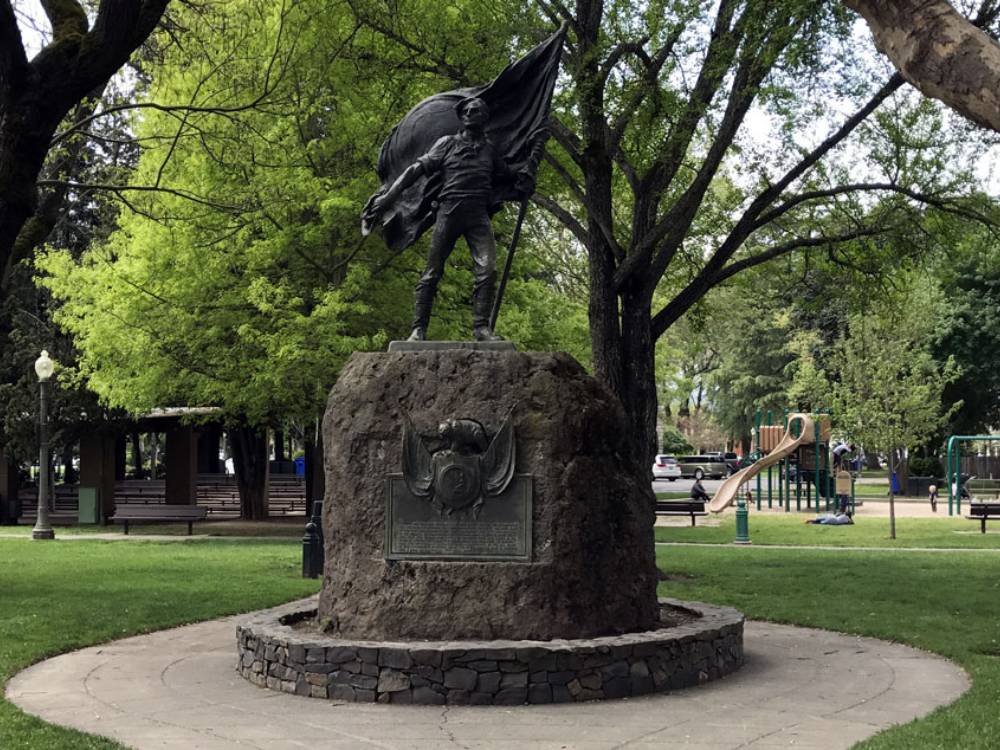
Bear Flag Revolt Statue, Sonoma CA.
TEMPLE LODGE HISTORY
Temple Lodge No. 14 of Free and Accepted Masons was Chartered on May 6, 1851. It is the oldest fraternal organization in the City of Sonoma.
Today, Temple Lodge is perhaps best known as the proud sponsor of the annual Sonoma Valley “Teacher of the Year Award” for outstanding achievement.
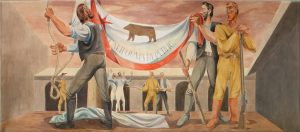
However, it is a well-known fact that Freemasons and the early pioneer history of both the town of Sonoma and the State of California are intertwined.
In fact, Freemasons were very prominent during the June 14, 1846 Bear Flag Revolt. Known Freemasons who participated or assisted in the Bear Flag Revolt include: Dr. Robert Baylor Semple, Captain Granville Commodore Perry Swift, Captain John Grigsby, Bartlett Vines, William Henry Hargrave, Peter Lassen and George C. Yount. There were most likely other Freemasons among the Bear Flag party, but their Masonic records cannot be traced with certainty.
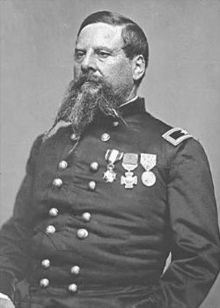
On July 9, 1846, A U.S. Navy Lieutenant and Freemason named Joseph Warren Revere (A Grandson of Paul Revere) hauled down the Bear Flag and raised the Stars and Stripes over the Sonoma Plaza for the very first time.
Following the Mexican War, Freemasons serving in the area as commissioned officers in the U.S. Army were prominent figures during the early years of Sonoma’s history. Sonoma was then an outpost on the Pacific frontier, and the officers posted here were of various backgrounds and professional training, as it was hoped they would remain in the area after their tours of duty were completed to help settle the frontier. Many of them did, while others went on to fame as Union Generals in the Civil War.
Several of the most high-profile included:
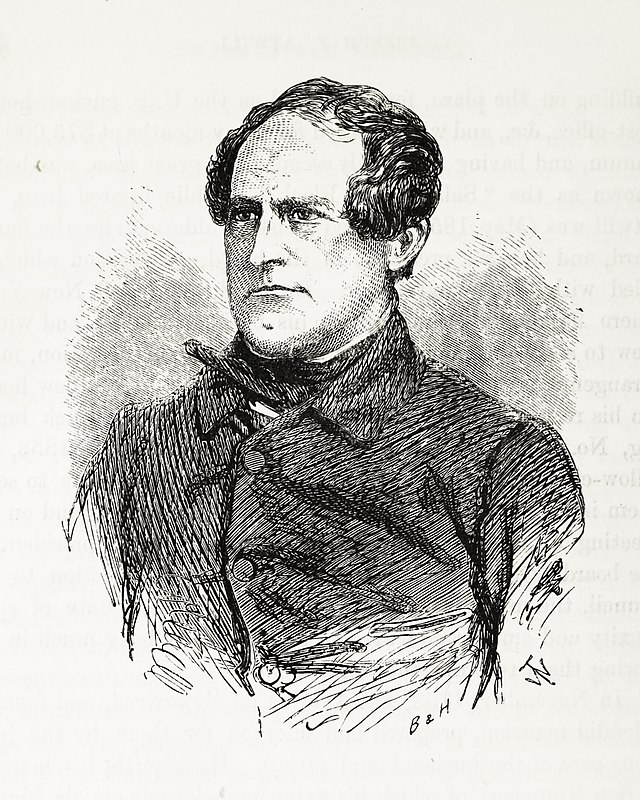
– Colonel Jonathan Drake Stevenson. The commanding officer of the First Regiment of New York Volunteers – the first U.S. Army troops garrisoned in the town of Sonoma and the Bay Area. He later became the first Masonic Grand Master of the State of California.
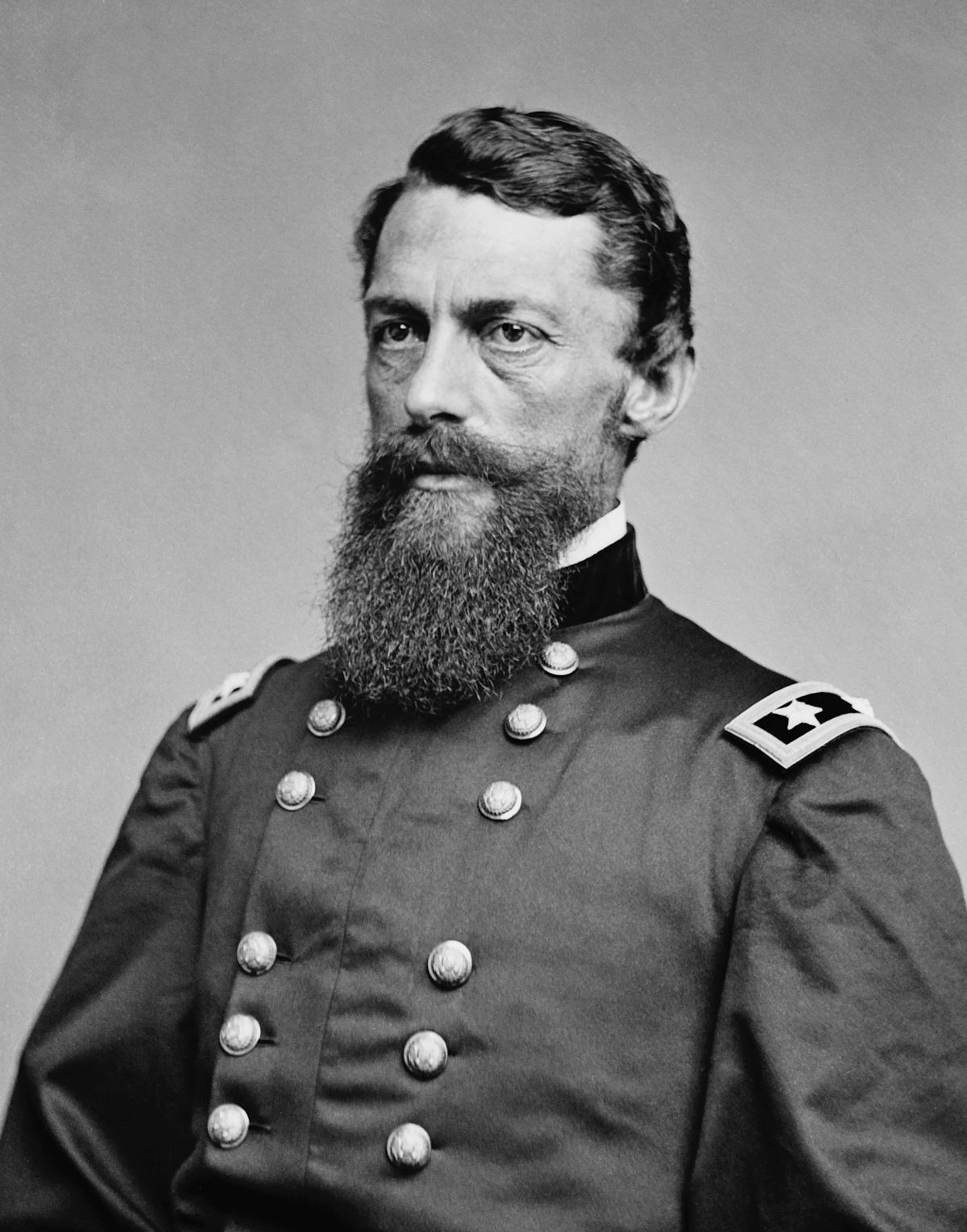
– Lieutenant George Stoneman Jr. A West Point graduate (Class of 1846) and roommate of fellow Cadet Thomas “Stonewall” Jackson. He rose to the rank of Major General in the Union Army during the Civil War and later served as the 15th Governor of the State of California from 1883 to 1887.
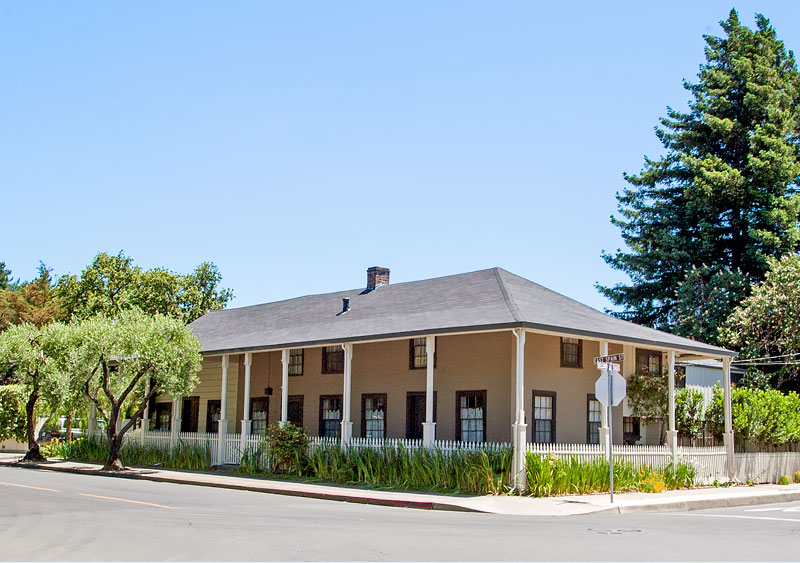
A formal dispensation was granted on November 25, 1850 in which local Freemasons were empowered and authorized by the Grand Master of California to form and open a Lodge after the manner of Free and Accepted Masons in the town of Sonoma.
On April 9, 1851 eight Freemasons began meeting in the historic Ray House or Adler Adobe located at the corner of Spain and Second Street East (205 East Spain Street). At the time, the house was used as a bachelor officer’s quarters and mess for a company of U.S Dragoon’s garrisoned in the town. The single upstairs room (whose dimensions were roughly 15 x 35 feet) was utilized as the actual lodge room. Although the house is a private residence today, it still bears the insignia of the Masonic order on its walls and upstairs floor.
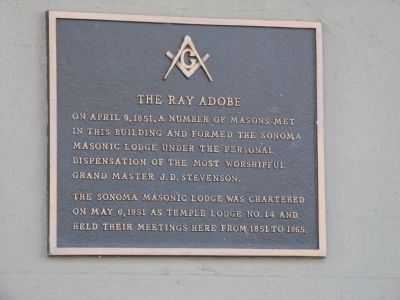
Temple Lodge No. 14 of Free and Accepted Masons officially obtained its Charter on May 6, 1851. Grand Master Jonathan D. Stevenson, officiated at the ceremonies. The Lodge was first called “Sonoma Lodge.” However, the name was changed 28 days later to “Temple Lodge” being that Sonoma is the local American Indian name for the moon, and Freemasons are generally governed by the sun in its symbolism.

Several West Point graduates were among the first officers of our Lodge. Lieutenant George Horatio Derby was the first Elected Master of Temple Lodge. Lieutenant George Stoneman. Jr. was the first Secretary. Lieutenant Robert Hopkins was the first Treasurer. Charter members included: H. Hendley, George H. Derby, James Long, M. Pelty, Jesse Davisson, William Burris, P. Hicklen, Stephen Akers, Jason Smith, E. Peabody and George Stevenson. John G. Ray, who built the house at the corner of Spain and Second Street East, was one of the first Entered Apprentices to be initiated in Temple Lodge during that first year.
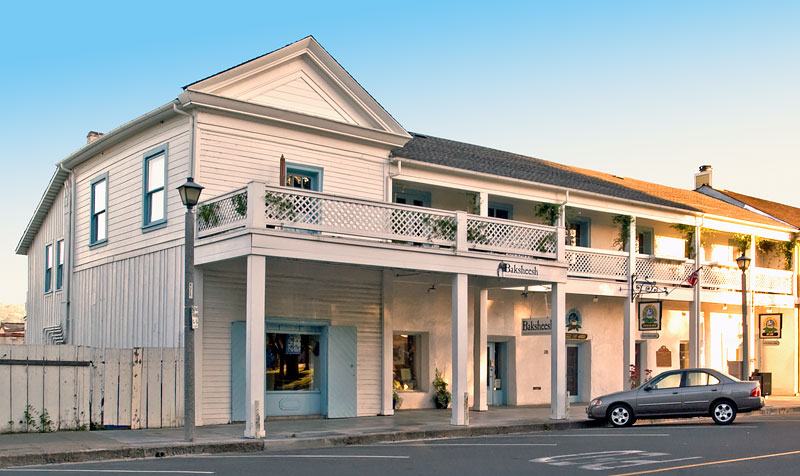
By 1857, Temple Lodge had 42 members. The next year, the Lodge moved to the south part of the second floor of the Salvador Vallejo Adobe on First Street West. That building remains today.
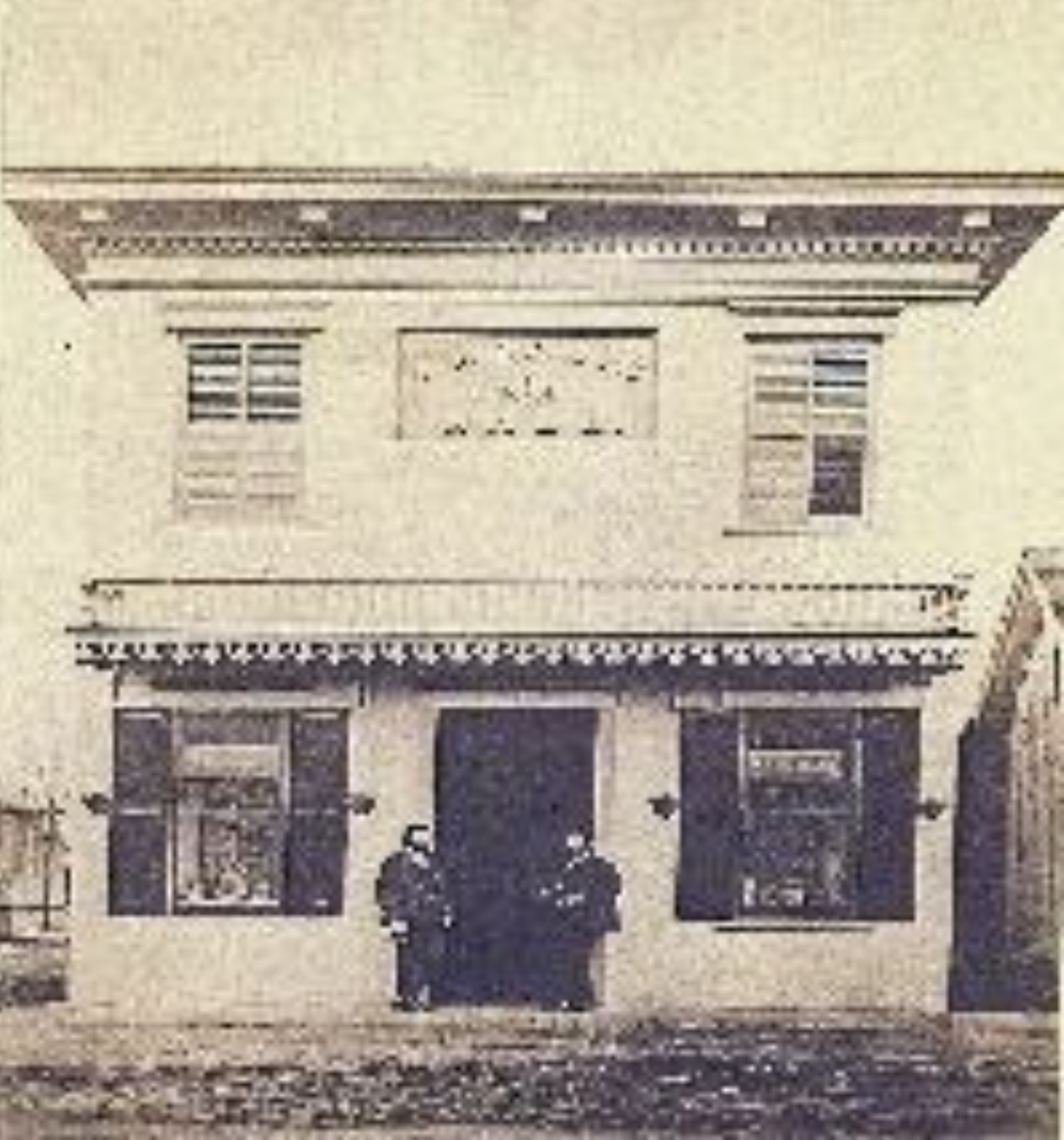
Around 1879, the Lodge moved to the Vaslit Building, which became the Sonoma Valley Bank. The building was located near the middle of the block on Napa Street on the south side of the Plaza. In 1884, the Order of Eastern Star No. 61 became affiliated with Temple Lodge No. 14. In 1889, the lodge building on Napa Street burned to the ground and most of the lodge records were lost. However, several of the original officers’ jewels (from 1851) were recovered after the fire.
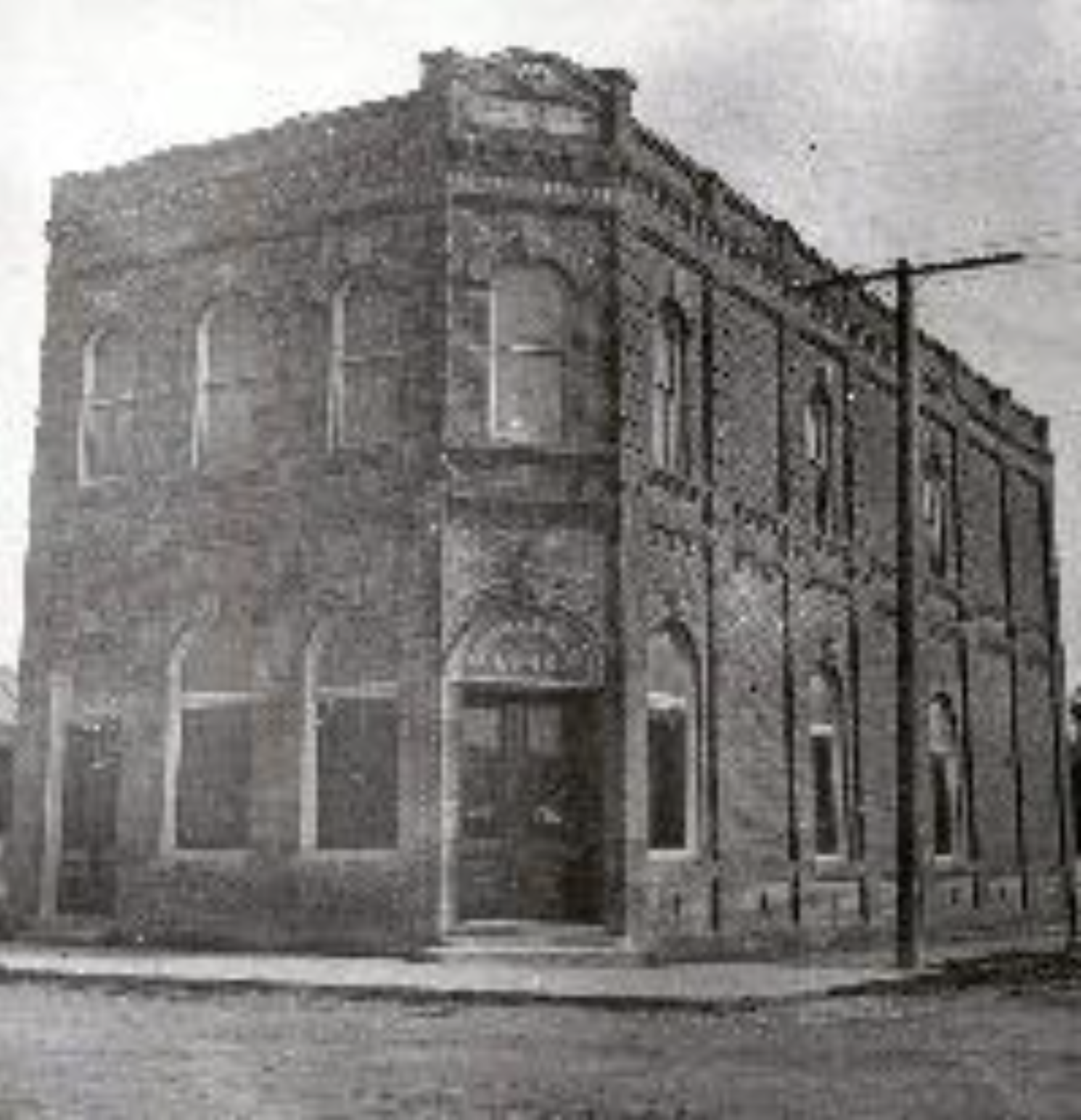
Temple Lodge then held its meetings in the Oddfellows building on Broadway until the new Sonoma Valley Bank was built on the corner of Broadway and Napa Streets. The Lodge was located on the second floor of the bank building. At the time, the building was described as one of the finest buildings located north of San Francisco. The 1906 earthquake damaged the second floor of the bank building and it had to be removed. Temple Lodge retained title to the space above that building until 1994, when all rights were relinquished.
For the next two years, Temple Lodge held meetings in the homes of Doris Stofer (1906), and Enise Bates (1907) until the Lodge located on the west side of the Sonoma Plaza (at 465 First Street West) was finished in 1909.
Temple Lodge No. 14 met in this building for 84 years and its membership grew to over 300 members.
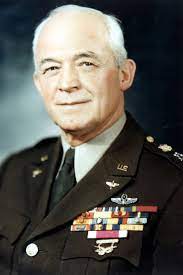
After retiring from the armed forces for health reasons at the end of World War II, Five-Star General and Freemason Henry “Hap” Arnold moved to the Sonoma Valley. General Arnold was a key figure during the early days of military aviation and he was taught to fly by the Wright Brothers. He is considered the father of the modern day U.S. Air Force and he was the only Five-Star General to wear the uniform of a U.S. Air Force officer. General Arnold was also the only American General to hold permanent Five-Star rank in more than one branch of the armed forces (He was General of the Army and General of the Air Force).
Although General Arnold was not a member of Temple Lodge, he did visit our lodge and he quickly became the most high-profile Freemason to live in the Sonoma Valley since General and Govenor George Stoneman, Jr.
Both Arnold Drive and Arnold Field are named in his honor.
According to Arnold family oral history, General Arnold attended one particular Temple Lodge stated meeting with fellow Freemason and Five-Star General George Marshall. Apparently, they both walked into a stated meeting without advance notice one evening sometime in 1945. At the time, General Marshall was staying at the Arnold home in Glen Ellen during his attendance at the formation of the United Nations in San Francisco.
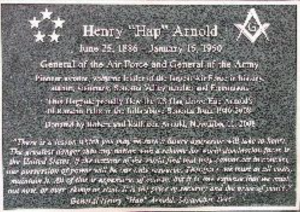
A bronze Masonic marker commemorating General Hap Arnold’s many accomplishments is located at the base of a 15-foot tall solid redwood flagpole within the Sonoma Masonic Center courtyard. This is the same handmade flagpole, which proudly flew the U.S. flag above General Arnold’s historic ranch (El Rancho Feliz) in the hills above Sonoma from 1946 to 2008. General Arnold’s Grandson, Robert Arnold, and his wife Kathleen donated the flagpole to the Sonoma Masonic Center.
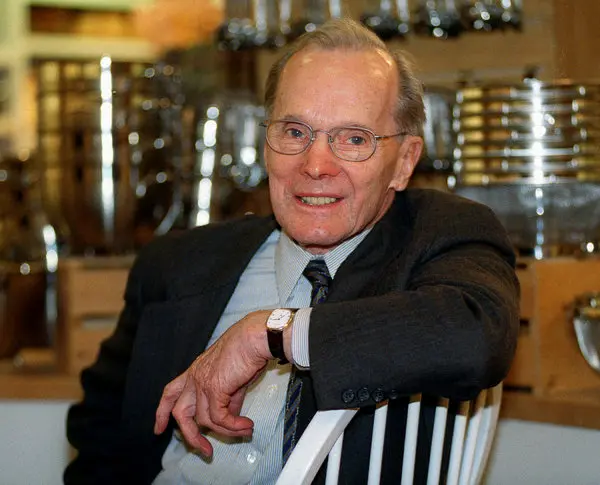
On November 14, 1956, at the age of 38, Charles E. (Chuck) Williams was raised to the Third Degree as a Master Mason at Temple Lodge No. 14 in the town of Sonoma. Today, Chuck WIlliams is best known as the founder of Williams-Sonoma, Inc. – the premier specialty retailer of gourmet cookware and home furnishings in the United States. Without question, he is one of the most high-profile “Masonic” businessmen in the world.
Chuck Williams has been a proud member of Temple Lodge No. 14 in Sonoma for over 50 years.
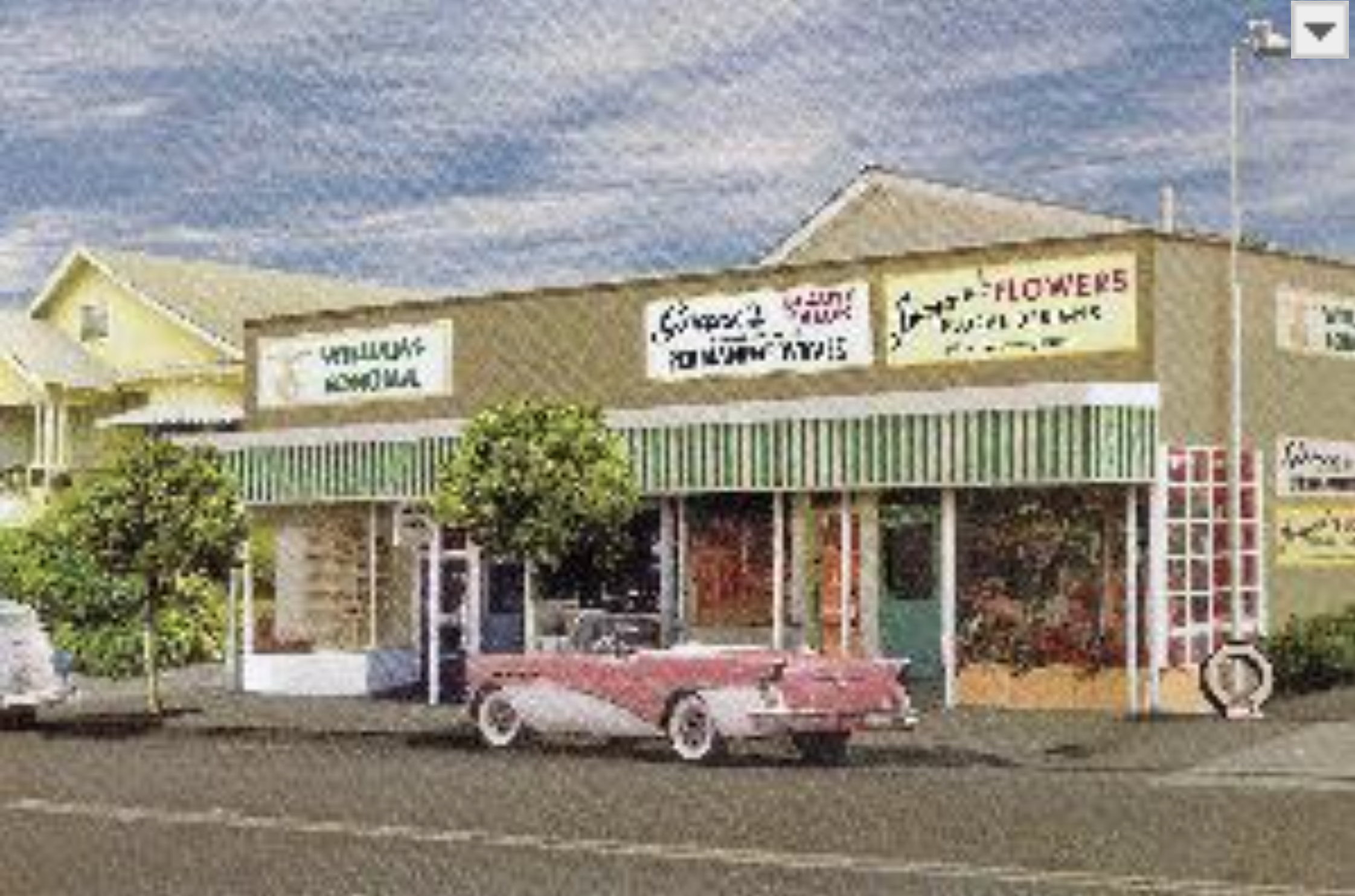
Arguably, the original roots of the Williams-Sonoma company actually began within the brotherhood of our lodge. It is a documented fact that a fellow Freemason and member of Temple Lodge No. 14 (an electrician from Sweden) actually hosted Chuck Williams on his fateful first trip to Europe, which ignited his love for French cookery. While in Paris, he was inspired by the high quality of cookware he saw in homes and restaurants. He returned with a plan to bring those same cooking tools into American kitchens. He did just that, founding the Williams-Sonoma company and innovating how Americans cook. In 1956, he opened his very first store in the town of Sonoma at 603 Broadway – only one block from the current location of the Sonoma Masonic Center. By 1958, he moved his home and business to San Francisco. That same year, just blocks away in the same city, the California Masonic Memorial Temple was dedicated as the new home of the Grand Lodge of California.
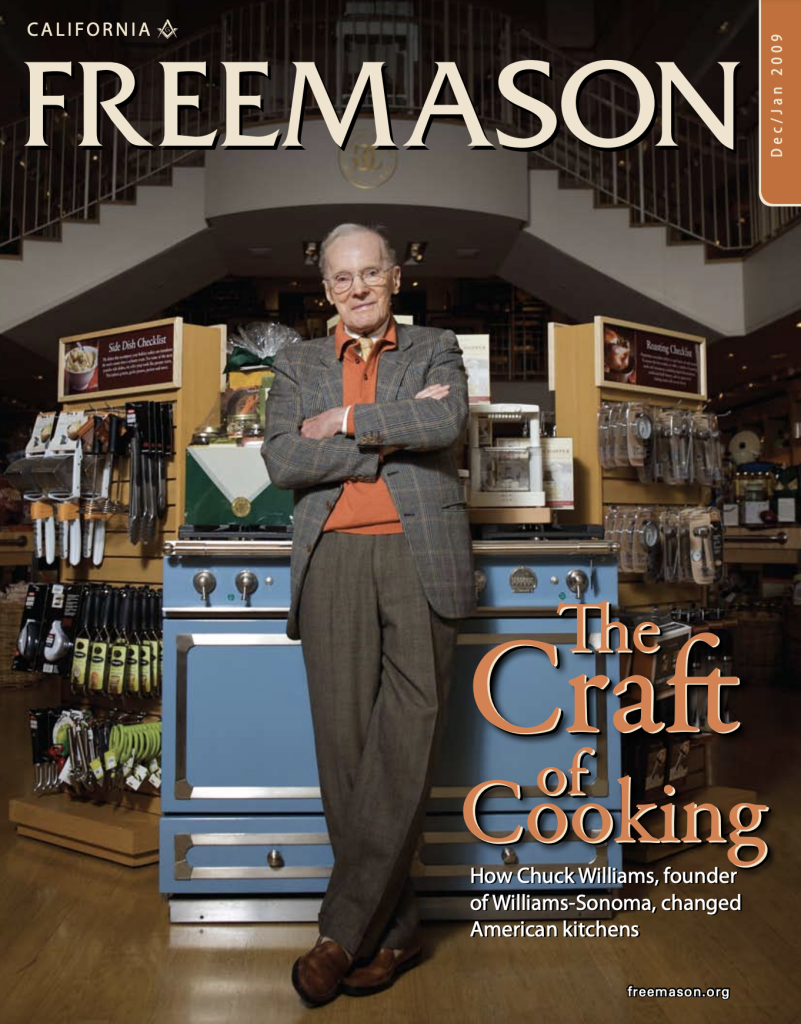
The Grand Lodge of California paid a special tribute to the many accomplishments of Chuck Williams by featuring him on the cover of the December/January 2009 issue of “California Freemason” magazine – the only official publication of the Grand Lodge of California. His life story titled “The American Way of Cooking: How Chuck Williams Revolutionized Our Kitchens” also appeared within this same issue on page 12. Click HERE to see magazine issue.
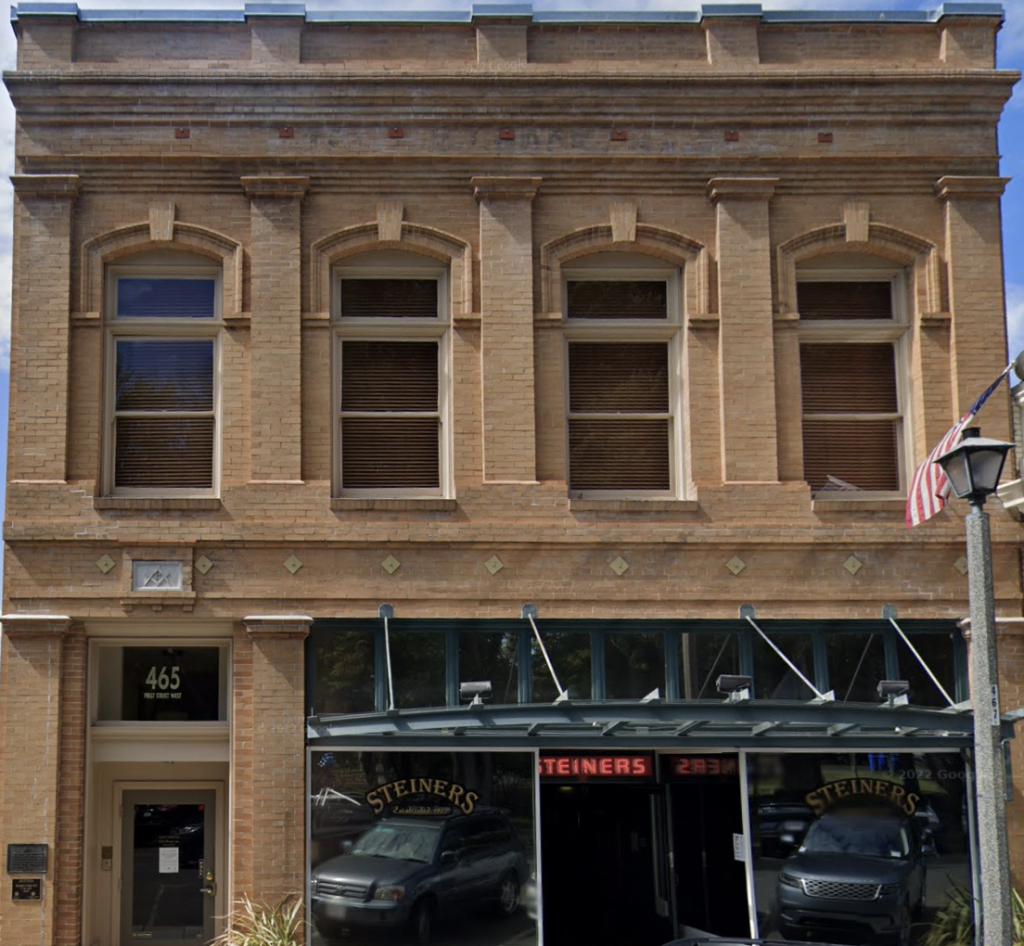
In 1991 the City of Sonoma decided that our historic Lodge building on First Street West did not have enough steel in her walls and she was labeled “potentially hazardous.” Temple Lodge was forced to either retrofit the building or sell. The Lodge voted to sell the building.
Today, this building is perhaps best known as the current home of Steiner’s Tavern which is located on the first floor. There are still visible traces of the original lodge room within the interior on the second floor of this building.
After the sale of the Lodge building on First Street West, there was enough money available for the purchase of a new site. During this search, lodge meetings were held in the Community Center building on East Napa Street.
During the the Summer of 2007, the interior design of our “Lodge Room” located at 669 Broadway was completely remodeled under the creative leadership of Brother Curits Ashbeck. Although the photo below shows the remodeled interior (Facing the East) of our “Lodge Room,” there is still more work planned. Therefore, It is still a “work in progress” and a “labor of love” by Brother Curtis Ashbeck.
History continues….
Historical, by Robert A Poppe Aug. 1 1885
Temple Lodge No. 14 P. & A.M, was chartered on May 6th 1851. It succeeded to, and grew out of, Sonoma Lodge U.D, which was organized on April 9th, 1851. The dispensation, authorizing the establishment of Sonoma Lodge UD., recognized Brothers James A. Long, John Hendley, Martin E. Rector, Stephen Akers, George Stoneman, Jesse Davisson, William Burris and Balio Flicklin. These eight were the Pioneers of Masonry in Sonoma County. At the first meeting of said Sonoma Lodge, U.D, held on April 9 1851 Brothers George A Derby and Jason Smith were present as visitors, and were then and there affiliated as members. On the 11t E.J. Peabody was likewise affiliated, so that the membership of Sonoma Lodge, during the twenty-eight days of its existence was increased from eight to eleven members.
On April 26th 1851 it was decided by vote of the Lodge, that the Grand Lodge, then in session at Sacramento, be petitioned for a Charter, and a Charter was granted on May 6, 1851. The Committee appointed to go to the Grand Lodge on this errand, consisted of Bros., Derby, Hendley, and Long. At this meeting, also, officers were elected to serve during the Masonic year closing Dec. 27 1851
They were as follows: Geo H Derby, W.M., Jas R. Long S.W., John Hendley, J.W., Stephen Akers, Treas., George Stoneman, Secretary, Jesse Davisson S.D., William Burris, J.D., and Jason Smith, Tyler. Brother John Hendley resigned as S.W. and demitted on May 14, 1851, and was succeeded by E.J. Peabody who served during the remainder of the year. It should have been stated previously the officers of Sonoma Lodge, U.D. consisted of the following: James R. Long, W.M, John Hendley, S.W., Martin Rector, J.W. Stephen Akers, Treas., George Stoneman, Secretary, Geo. H. Derby, S.D., William Burris, JD. and Jason Smith, Tyler.
“John Cameron and Hiram Leonard were the first persons to receive the sublime degree of Master Mason in Temple Lodge. This important date was May 31 1851.”
Temple Lodge has had three different Lodge-rooms during the thirty-four years of its existence. First, the Ray building, now known as “Adler’s Adobe, situated on the corner of Spain street and Second street East; Secondly, the south half of the old El Dorado, or Academy building, now occupied by Camille Aguillon, and lastly the present quarters, over the Sonoma Valley Bank, suspended in midair “neither on the highest hill nor in the lowest vale”
Temple Lodge has had 23 Masters, 23 Senior Wardens, 25 Junior Wardens, 8 Treasurers, and 20 Secretaries. The number of Master Masons, who, at one time or another were members of Temple Lodge is 170; the present membership is 46.
The Historian of Temple Lodge apologizes for the somewhat imperfect condition of many of the statistical biographies herein contained, but as he has jotted down everything the records contain, he feels that no blame can attach to him. If in the 34 years hence, the Historian of the period will derive as much pleasure in examining the records of the next thirty-four years, as the undersigned has from those of the last like period, he will be amply repaid for any amount of trouble he may have had.
Artemus Ward once expressed himself as willing to give advice to persons about to get married. His advice was, Don’t. If will be permitted me to advise Temple Lodge with respect to electing a man as Secretary who is a ‘good fellow and would like to hang a jewel on his manly bosom, but who does not possess the necessary qualifications to keep the records neatly and correctly, and whose handwriting resembles the trail of a centipede with delirium tremens – I would most emphatically say Don’?”
/S/ Robert Albion Poppe
August 1, 1885
*Notes to the reader:
Charles Farrar Brown was an American humor writer, better known under his nom de plume, Artemus Ward, born April 26, 1834.
The second Lodge room occupied the south half of the still standing Salvador Vallejo Adobe.
About 1879, the Lodge moved to the 2nd floor of the Vaslit Pharmacy, later the Sonoma Valley Bank, situated south of the Plaza on East Napa Street at about where Number 15 is today. The building burned down in 1889, taking with it the fraternal records.
